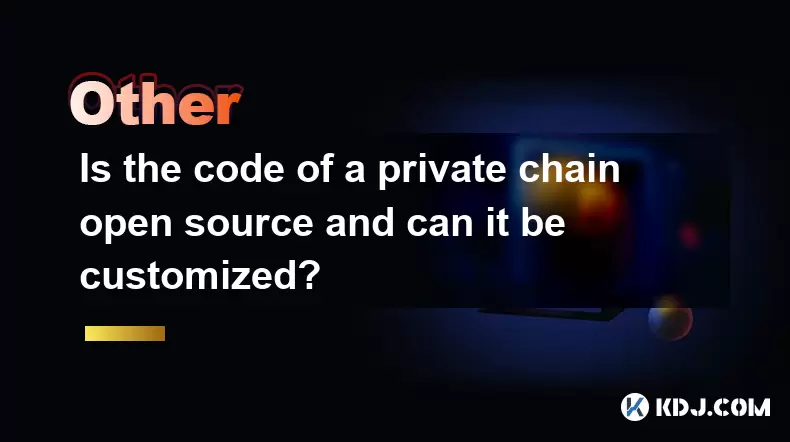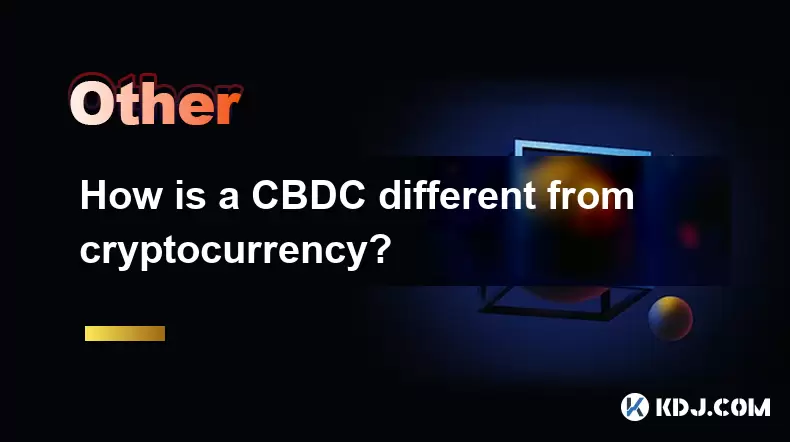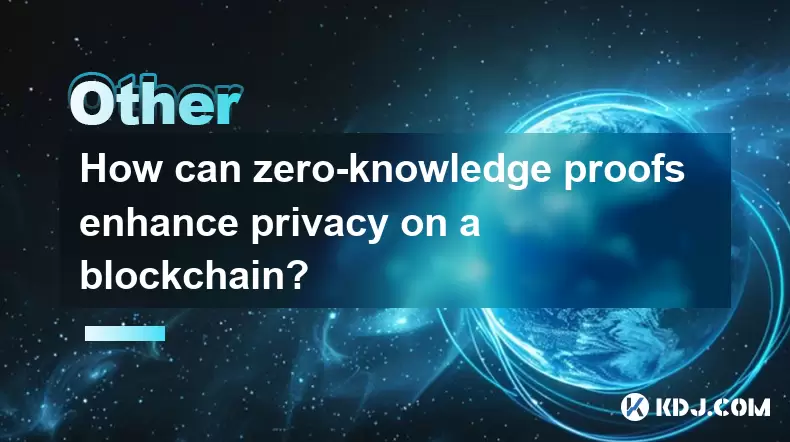-
 Bitcoin
Bitcoin $117800
0.49% -
 Ethereum
Ethereum $4432
0.55% -
 XRP
XRP $3.106
1.07% -
 Tether USDt
Tether USDt $1.001
0.01% -
 BNB
BNB $835.8
1.74% -
 Solana
Solana $189.1
2.72% -
 USDC
USDC $0.9999
-0.01% -
 Dogecoin
Dogecoin $0.2302
3.65% -
 TRON
TRON $0.3485
-0.69% -
 Cardano
Cardano $0.9212
-0.91% -
 Hyperliquid
Hyperliquid $46.97
1.45% -
 Chainlink
Chainlink $22.77
5.61% -
 Stellar
Stellar $0.4284
0.82% -
 Sui
Sui $3.766
2.82% -
 Bitcoin Cash
Bitcoin Cash $583.5
-0.82% -
 Ethena USDe
Ethena USDe $1.001
0.03% -
 Hedera
Hedera $0.2512
2.78% -
 Avalanche
Avalanche $24.18
2.27% -
 Litecoin
Litecoin $120.2
2.10% -
 Toncoin
Toncoin $3.450
1.96% -
 UNUS SED LEO
UNUS SED LEO $9.412
-0.92% -
 Shiba Inu
Shiba Inu $0.00001298
2.35% -
 Uniswap
Uniswap $10.99
3.75% -
 Polkadot
Polkadot $3.962
3.09% -
 Dai
Dai $1.000
0.00% -
 Bitget Token
Bitget Token $4.643
1.38% -
 Cronos
Cronos $0.1511
-0.08% -
 Ethena
Ethena $0.7246
3.18% -
 Monero
Monero $254.9
7.90% -
 Pepe
Pepe $0.00001100
3.32%
Is the code of a private chain open source and can it be customized?
Private chains can be open source, allowing customization and community engagement, but organizations must balance transparency with security and intellectual property concerns.
May 15, 2025 at 09:49 pm

In the world of cryptocurrencies and blockchain technology, private chains or permissioned blockchains have become a topic of interest for many enterprises and organizations. A private chain is a blockchain network where access is restricted to a specific group of participants, as opposed to public blockchains like Bitcoin and Ethereum, which are open to anyone. One of the key questions surrounding private chains is whether their code can be open source and customizable. In this article, we will delve into this question and explore the various aspects of open source code and customization in the context of private chains.
Understanding Open Source Code in Private Chains
Open source code refers to software whose source code is publicly available for anyone to view, modify, and distribute. In the context of private chains, the decision to make the code open source can have significant implications for the network's security, development, and adoption.
When a private chain's code is open source, it allows developers and other interested parties to inspect the code for vulnerabilities, propose improvements, and contribute to the project. This transparency can enhance the security of the network, as more eyes on the code can help identify and fix potential issues more quickly.
However, some organizations may choose to keep their private chain's code proprietary, meaning it is not openly available. This decision might be driven by the need to protect sensitive business logic or to maintain a competitive advantage. In such cases, the code is typically developed and maintained by a select group of trusted developers within the organization.
Customization of Private Chains
Customization is a crucial aspect of private chains, as they are often designed to meet the specific needs of an organization or consortium. The ability to tailor the blockchain to fit particular use cases can be a significant advantage of private chains over public ones.
When the code of a private chain is open source, customization becomes more straightforward. Developers can modify the code to add new features, optimize performance, or integrate with existing systems. This flexibility can be particularly valuable for enterprises that need to adapt the blockchain to their unique business processes.
However, even if the code is not open source, customization is still possible to some extent. In this case, the organization would need to work with the developers who have access to the code to make the desired changes. This approach may be more time-consuming and costly, but it allows the organization to maintain control over the codebase.
Benefits of Open Source Private Chains
There are several benefits to making the code of a private chain open source:
- Community Engagement: An open source project can attract a community of developers who can contribute to the codebase, leading to faster development and innovation.
- Transparency and Trust: By making the code publicly available, organizations can demonstrate their commitment to transparency, which can build trust among users and partners.
- Security: With more people able to review the code, vulnerabilities can be identified and addressed more quickly, enhancing the overall security of the network.
- Cost Efficiency: Leveraging the contributions of the open source community can reduce the costs associated with developing and maintaining the blockchain.
Challenges of Open Source Private Chains
While there are clear benefits to open source private chains, there are also some challenges to consider:
- Intellectual Property Concerns: Organizations may be hesitant to share their code openly due to concerns about protecting their intellectual property and maintaining a competitive edge.
- Security Risks: While open source can enhance security in some ways, it also means that potential attackers have access to the code, which could be used to find and exploit vulnerabilities.
- Governance and Coordination: Managing an open source project requires effective governance and coordination to ensure that contributions align with the project's goals and that the codebase remains stable and secure.
Examples of Open Source Private Chains
Several examples of open source private chains demonstrate the feasibility and benefits of this approach:
- Hyperledger Fabric: Developed by the Linux Foundation, Hyperledger Fabric is an open source blockchain platform designed for enterprise use. It allows organizations to build private chains with customizable features and governance models.
- Corda: Developed by R3, Corda is another open source blockchain platform focused on financial services. It enables the creation of private chains that can be tailored to specific industry needs.
- Quorum: Originally developed by JPMorgan Chase, Quorum is an open source private chain based on Ethereum. It is designed for use in financial institutions and can be customized to meet specific requirements.
Implementing and Customizing an Open Source Private Chain
To implement and customize an open source private chain, organizations can follow these steps:
- Choose a Platform: Select an open source private chain platform that aligns with your organization's needs, such as Hyperledger Fabric, Corda, or Quorum.
- Set Up the Environment: Install the necessary software and tools required to run and develop on the chosen platform. This may include setting up a development environment, installing dependencies, and configuring the network.
- Configure the Network: Define the network topology, including the number of nodes, consensus mechanism, and access controls. This step involves setting up the private chain's infrastructure.
- Develop Custom Features: Modify the code to add custom features or integrations. This may involve writing smart contracts, developing APIs, or modifying the core blockchain protocol.
- Test and Deploy: Thoroughly test the customized private chain in a controlled environment to ensure it meets the organization's requirements. Once testing is complete, deploy the network for use.
Frequently Asked Questions
Q: Can a private chain be both open source and secure?
A: Yes, a private chain can be open source and secure. While open source code can expose the network to potential vulnerabilities, it also allows for more thorough scrutiny and faster identification of issues. Proper governance, regular security audits, and community engagement can help maintain the security of an open source private chain.
Q: What are the licensing considerations for open source private chains?
A: Open source private chains typically use licenses such as the Apache License 2.0 or the GNU General Public License (GPL). These licenses define how the code can be used, modified, and distributed. Organizations need to carefully review the terms of the license to ensure they align with their goals and requirements.
Q: How can organizations contribute to open source private chain projects?
A: Organizations can contribute to open source private chain projects by participating in the project's governance, submitting code contributions, reporting bugs, and engaging with the community. Many projects have public repositories on platforms like GitHub, where contributions can be submitted and reviewed.
Q: Are there any industry-specific open source private chains?
A: Yes, there are industry-specific open source private chains. For example, Corda is tailored for the financial services industry, while Hyperledger Fabric can be used across various sectors, including supply chain management and healthcare. These platforms offer customizable features that can be adapted to meet the specific needs of different industries.
Disclaimer:info@kdj.com
The information provided is not trading advice. kdj.com does not assume any responsibility for any investments made based on the information provided in this article. Cryptocurrencies are highly volatile and it is highly recommended that you invest with caution after thorough research!
If you believe that the content used on this website infringes your copyright, please contact us immediately (info@kdj.com) and we will delete it promptly.
- Kazakhstan's Crypto Leap: Bitcoin ETF and Central Asia's Digital Finance Future
- 2025-08-13 12:45:19
- BlockDAG Presale Blazes Past $371M: Fundraising Frenzy Fuels Crypto Sensation
- 2025-08-13 13:05:21
- Meme Coins: Chasing the 2025 Surge – Which Will Moonshot?
- 2025-08-13 10:25:23
- Bitcoin's Wild Ride: Rally, Pullback, and What's Next
- 2025-08-13 10:25:23
- Bitcoin, Bitmax, and Institutional Demand: A New Era of Crypto Investment
- 2025-08-13 10:45:12
- Solana, ROAM, and Airdrops: What's the Buzz in 2025?
- 2025-08-13 11:35:13
Related knowledge

How does blockchain enable Web3?
Aug 13,2025 at 11:35am
Understanding the Role of Blockchain in Web3 InfrastructureBlockchain serves as the foundational layer upon which Web3 is built, enabling a decentrali...

How is a CBDC different from cryptocurrency?
Aug 12,2025 at 09:21am
Understanding the Core Nature of CBDCsA Central Bank Digital Currency (CBDC) is a digital form of a country’s sovereign currency, issued and regulated...

What is a CBDC (Central Bank Digital Currency)?
Aug 13,2025 at 11:36am
Understanding the Concept of a Central Bank Digital CurrencyA CBDC (Central Bank Digital Currency) is a digital form of a country’s fiat currency that...

How can zero-knowledge proofs enhance privacy on a blockchain?
Aug 12,2025 at 02:15am
Understanding Zero-Knowledge Proofs in Blockchain ContextZero-knowledge proofs (ZKPs) are cryptographic protocols that allow one party (the prover) to...

How does blockchain governance work?
Aug 13,2025 at 11:35am
Understanding Blockchain GovernanceBlockchain governance refers to the mechanisms and processes through which decisions are made about the development...

What is on-chain vs. off-chain data?
Aug 13,2025 at 11:35am
Understanding On-Chain Data in CryptocurrencyOn-chain data refers to all information that is permanently recorded and stored directly on a blockchain....

How does blockchain enable Web3?
Aug 13,2025 at 11:35am
Understanding the Role of Blockchain in Web3 InfrastructureBlockchain serves as the foundational layer upon which Web3 is built, enabling a decentrali...

How is a CBDC different from cryptocurrency?
Aug 12,2025 at 09:21am
Understanding the Core Nature of CBDCsA Central Bank Digital Currency (CBDC) is a digital form of a country’s sovereign currency, issued and regulated...

What is a CBDC (Central Bank Digital Currency)?
Aug 13,2025 at 11:36am
Understanding the Concept of a Central Bank Digital CurrencyA CBDC (Central Bank Digital Currency) is a digital form of a country’s fiat currency that...

How can zero-knowledge proofs enhance privacy on a blockchain?
Aug 12,2025 at 02:15am
Understanding Zero-Knowledge Proofs in Blockchain ContextZero-knowledge proofs (ZKPs) are cryptographic protocols that allow one party (the prover) to...

How does blockchain governance work?
Aug 13,2025 at 11:35am
Understanding Blockchain GovernanceBlockchain governance refers to the mechanisms and processes through which decisions are made about the development...

What is on-chain vs. off-chain data?
Aug 13,2025 at 11:35am
Understanding On-Chain Data in CryptocurrencyOn-chain data refers to all information that is permanently recorded and stored directly on a blockchain....
See all articles

























































































